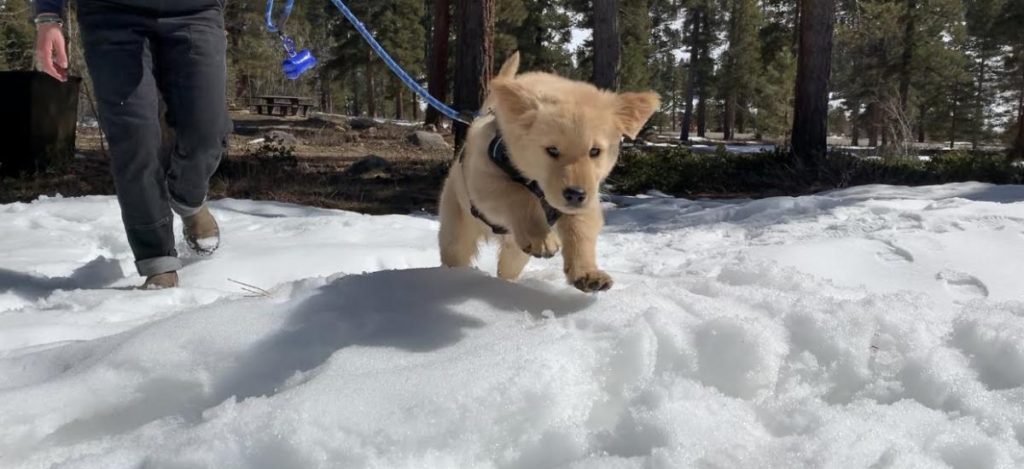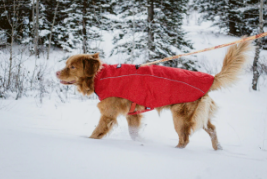Pet parents might be hesitant to take their dogs outside during the cold-weather months, and rightly so. But it’s important to safely enjoy the outdoors when you can. Here are some tips to keep your dog safe all season long!
Never Let Your Pup Off-Leash
Letting your dog off the lead during winter can be dangerous if you’re not careful. For example, they could inadvertently wander onto a frozen body of water with a thin layer of ice. Dogs may also want to explore their seasonal surroundings by taste, possibly lapping up dangerous chemicals such as salt and antifreeze along with melting snow. To prevent potential dangers, keep your dog securely on their leash and stick to familiar routes.

Keep Their Bodies Warm
When you’re starting to feel cold enough for a winter jacket, chances are so is your pup. Vets suggest keeping a well-fitting doggy jacket on hand. It should be snug across the entire chest and back but not restrict your dog’s movement. A good winter dog jacket is especially crucial when low temperatures are mixed with wind or rain and for dogs who are less tolerant to cold weather.

Keep Their Paws Warm and Safe
Experts recommend wiping dogs’ paws clean after every winter walk. This will prevent rock salt sticking to their feet and them ingesting it when licking their paws. Carefully inspect their paw after cleaning for any signs of dryness or cracks, apply a moisturizing balm or petroleum jelly as necessary.
Alternatively, you can keep your dog’s paws safe and warm with dog booties. These will minimize the risk of slips and falls just like your favourite pair of winter boots.

Take Short Walks During the Daytime
When temperatures start to drop, professionals recommend limiting outdoor walks to 30 minutes or less. While getting home before the sun goes down can be tough, it’s best to walk your dog during the sunnier times of the day (8am to 3pm), both for warmth and safety.
Of course getting outside for exercise, socialization and fresh air is important for both you and your dog’s physical and mental health. When you can’t get outside as much as you’d like, experts suggests making the most of your indoor times by playing games, setting up an obstacle course or going on more frequent but shorter walks.

Understand the Signs That Your Pup Is Too Cold
Hypothermia in dogs occurs when their body temperature drops below 37 C. Signs of hypothermia in dogs include:
- Lethargy
- Pale gums
- Shivering
- Reluctance to move
- Stiffness when walking
If you notice any of the above signs, take your dog indoors and wrap them in blankets. Your dog should be evaluated by a vet as soon as possible. Once the body temperature drops or extremities get chilly from the wet or wind, your dog is also at risk of frostbite. It’s another serious cold-weather condition in which blood flow is diverted to the core organs to keep them warm. This can leave the tip of the tail, ears, nose, paw pads, and toes without adequate blood flow. Eventually, the tissues freeze and die.
Inspect your dog for the following signs of frostbite:
- Redness
- Swelling
- Blistering
- Pain causing pets to excessively scratch, lick or chew
- Darker or black colour of the skin
A well-stocked winter safety kit can make all the difference in preventing these and other cold-weather mishaps. Experts recommend always having a way to warm your pup, like a waterproof blanket or towel, and fresh clean water, even if it’s cold out. In case of an accident, always have gauze squares, triple antibiotic ointment, and a medical bandage. Of course, what you pack in your pet emergency kit will depend on your planned activity, your dog’s special needs, and the weather that day.

Special thanks to petMD and Dr. Horniman, Dr. Sack, Dr. Kozlowski for the tips! Stay safe and happy holidays!

